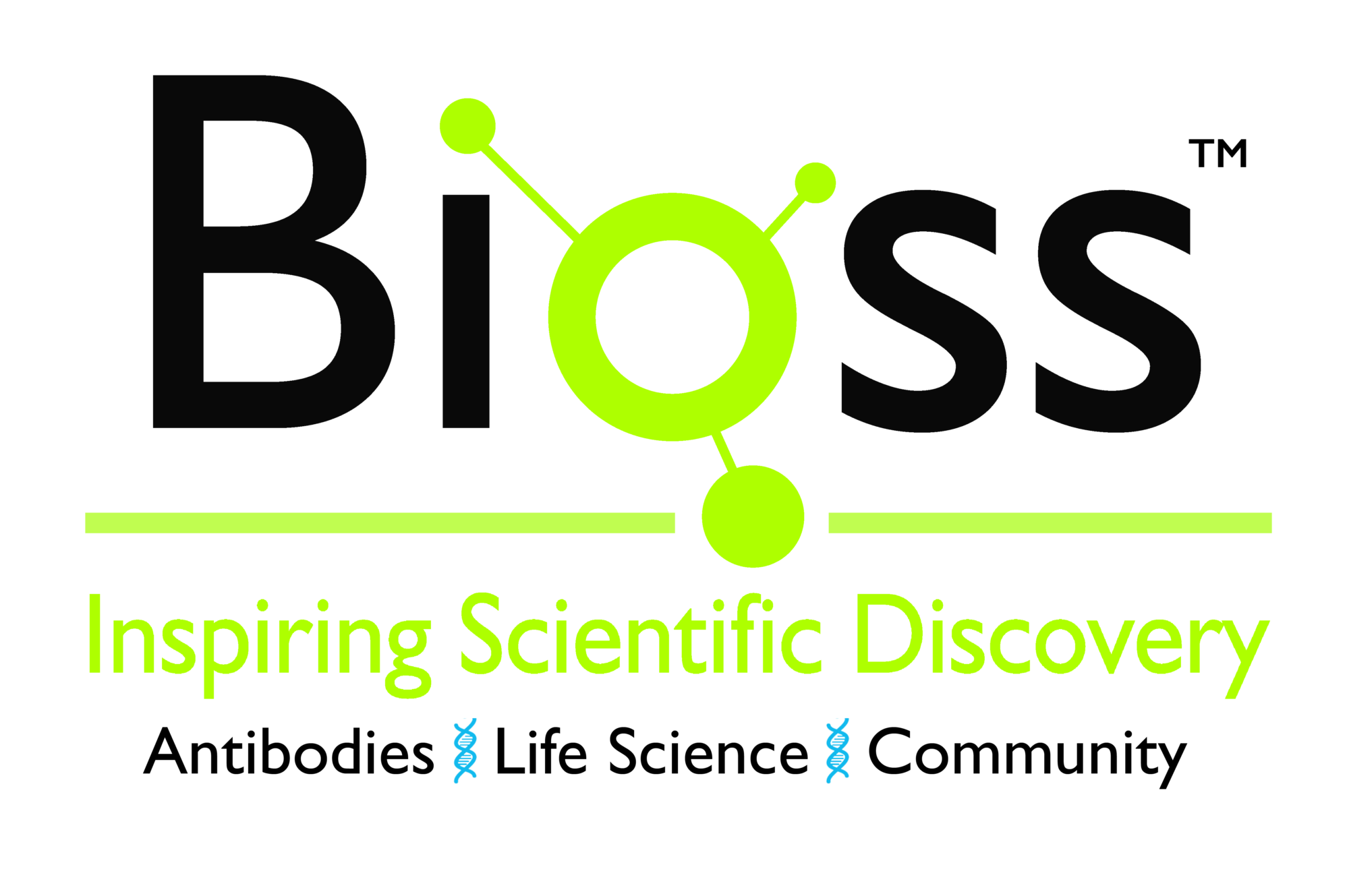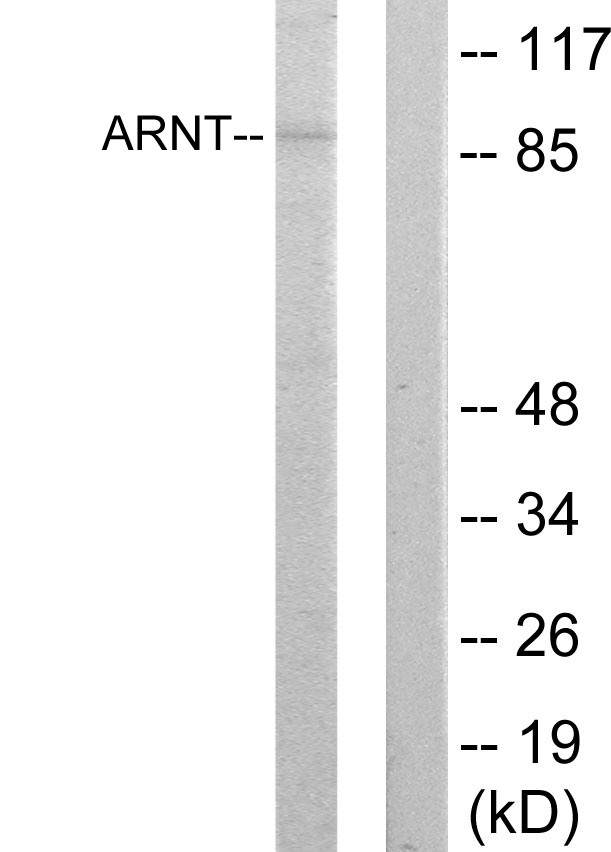![WB analysis of whole cell extracts (30 microg lysate) of HeLa (Lane 1), MCF-7 (Lane 2), NIH/3T3 (lane 3) and PC 12 (Lane 4) using GTX22771 HIF1 beta antibody [2B10]. Dilution : 1:500-3000 WB analysis of whole cell extracts (30 microg lysate) of HeLa (Lane 1), MCF-7 (Lane 2), NIH/3T3 (lane 3) and PC 12 (Lane 4) using GTX22771 HIF1 beta antibody [2B10]. Dilution : 1:500-3000](https://www.genetex.com/upload/website/prouct_img/normal/GTX22771/GTX22771_1588_WB_w_23060620_282.webp)
WB analysis of whole cell extracts (30 microg lysate) of HeLa (Lane 1), MCF-7 (Lane 2), NIH/3T3 (lane 3) and PC 12 (Lane 4) using GTX22771 HIF1 beta antibody [2B10]. Dilution : 1:500-3000
HIF1 beta antibody [2B10]
GTX22771
ApplicationsGel Shift Assay, ImmunoFluorescence, ImmunoPrecipitation, Western Blot, ImmunoCytoChemistry, ImmunoHistoChemistry, ImmunoHistoChemistry Paraffin
Product group Antibodies
ReactivityFish, Human, Mouse, Primate, Rat, Xenopus
TargetARNT
Overview
- SupplierGeneTex
- Product NameHIF1 beta antibody [2B10]
- Delivery Days Customer9
- Application Supplier NoteWB: 1:500-1:3000. ICC/IF: 1:1,000. IHC-P: 5 microg/ml. *Optimal dilutions/concentrations should be determined by the researcher.Not tested in other applications.
- ApplicationsGel Shift Assay, ImmunoFluorescence, ImmunoPrecipitation, Western Blot, ImmunoCytoChemistry, ImmunoHistoChemistry, ImmunoHistoChemistry Paraffin
- CertificationResearch Use Only
- ClonalityMonoclonal
- Clone ID2B10
- Concentration1 mg/ml
- ConjugateUnconjugated
- Gene ID405
- Target nameARNT
- Target descriptionaryl hydrocarbon receptor nuclear translocator
- Target synonymsARNT1, HIF-1-beta, HIF-1beta, HIF1-beta, HIF1B, HIF1BETA, TANGO, bHLHe2, aryl hydrocarbon receptor nuclear translocator, class E basic helix-loop-helix protein 2, dioxin receptor, nuclear translocator, hypoxia inducible factor 1 subunit beta, hypoxia-inducible factor 1, beta subunit
- HostMouse
- IsotypeIgG1
- Protein IDP27540
- Protein NameAryl hydrocarbon receptor nuclear translocator
- Scientific DescriptionThis gene encodes a protein containing a basic helix-loop-helix domain and two characteristic PAS domains along with a PAC domain. The encoded protein binds to ligand-bound aryl hydrocarbon receptor and aids in the movement of this complex to the nucleus, where it promotes the expression of genes involved in xenobiotic metabolism. This protein is also a co-factor for transcriptional regulation by hypoxia-inducible factor 1. Chromosomal translocation of this locus with the ETV6 (ets variant 6) gene on chromosome 12 have been described in leukemias. Alternative splicing results in multiple transcript variants. [provided by RefSeq, Oct 2013]
- ReactivityFish, Human, Mouse, Primate, Rat, Xenopus
- Storage Instruction-20°C or -80°C,2°C to 8°C
- UNSPSC12352203
References
- Lalevée S, Lapaire O, Bühler M. miR455 is linked to hypoxia signaling and is deregulated in preeclampsia. Cell Death Dis. 2014,5(9):e1408. doi: 10.1038/cddis.2014.368Read this paper
- Zhao Y, Gu JH, Dai CL, et al. Chronic cerebral hypoperfusion causes decrease of O-GlcNAcylation, hyperphosphorylation of tau and behavioral deficits in mice. Front Aging Neurosci. 2014,6:10. doi: 10.3389/fnagi.2014.00010Read this paper
- Lee SJ, Kim HP, Jin Y, et al. Beclin 1 deficiency is associated with increased hypoxia-induced angiogenesis. Autophagy. 2011,7(8):829-39.Read this paper
- Liu S, Piatigorsky J. Regulation of mouse small heat shock protein αb-crystallin gene by aryl hydrocarbon receptor. PLoS One. 2011,6(4):e17904. doi: 10.1371/journal.pone.0017904Read this paper
- Azkargorta M, Fullaondo A, Laresgoiti U, et al. Differential proteomics analysis reveals a role for E2F2 in the regulation of the Ahr pathway in T lymphocytes. Mol Cell Proteomics. 2010,9(10):2184-94. doi: 10.1074/mcp.M110.001263Read this paper
- Serra-Pérez A, Planas AM, Núñez-O'Mara A, et al. Extended ischemia prevents HIF1alpha degradation at reoxygenation by impairing prolyl-hydroxylation: role of Krebs cycle metabolites. J Biol Chem. 2010,285(24):18217-24. doi: 10.1074/jbc.M110.101048Read this paper
- Hord NG, Perdew GH. Physicochemical and immunocytochemical analysis of the aryl hydrocarbon receptor nuclear translocator: characterization of two monoclonal antibodies to the aryl hydrocarbon receptor nuclear translocator. Mol Pharmacol. 1994,46(4):618-26.Read this paper

![ICC/IF analysis of NRK cells using GTX22771 HIF1 beta antibody [2B10]. Fixation : 4% paraformaldehyde Permeabilization : 0.1% Triton X-100 in PBS for 15 minutes Dilution : 40 microg/ml in staining buffer for 1 hour at room temperature ICC/IF analysis of NRK cells using GTX22771 HIF1 beta antibody [2B10]. Fixation : 4% paraformaldehyde Permeabilization : 0.1% Triton X-100 in PBS for 15 minutes Dilution : 40 microg/ml in staining buffer for 1 hour at room temperature](https://www.genetex.com/upload/website/prouct_img/normal/GTX22771/GTX22771_415_ICC-IF_w_23060620_236.webp)
![ICC/IF analysis of A2058 Cells using GTX22771 HIF1 beta antibody [2B10]. Cells were probed without (right) or with(left) an antibody. Green : Primary antibody Blue : Nuclei Red : Actin Fixation : formaldehyde Dilution : 1:100 overnight at 4 oC ICC/IF analysis of A2058 Cells using GTX22771 HIF1 beta antibody [2B10]. Cells were probed without (right) or with(left) an antibody. Green : Primary antibody Blue : Nuclei Red : Actin Fixation : formaldehyde Dilution : 1:100 overnight at 4 oC](https://www.genetex.com/upload/website/prouct_img/normal/GTX22771/GTX22771_416_ICC-IF_w_23060620_479.webp)
![ICC/IF analysis of HeLa cells using GTX22771 HIF1 beta antibody [2B10]. Cells were probed without (right) or with(left) an antibody. Green : Primary antibody Blue : Nuclei Red : Actin Fixation : formaldehyde Dilution : 1:20 overnight at 4oC ICC/IF analysis of HeLa cells using GTX22771 HIF1 beta antibody [2B10]. Cells were probed without (right) or with(left) an antibody. Green : Primary antibody Blue : Nuclei Red : Actin Fixation : formaldehyde Dilution : 1:20 overnight at 4oC](https://www.genetex.com/upload/website/prouct_img/normal/GTX22771/GTX22771_417_ICC-IF_w_23060620_816.webp)
![ICC/IF analysis of U251 cells using GTX22771 HIF1 beta antibody [2B10]. Cells were probed without (right) or with(left) an antibody. Green : Primary antibody Blue : Nuclei Red : Actin Fixation : formaldehyde Dilution : 1:100 overnight at 4 oC ICC/IF analysis of U251 cells using GTX22771 HIF1 beta antibody [2B10]. Cells were probed without (right) or with(left) an antibody. Green : Primary antibody Blue : Nuclei Red : Actin Fixation : formaldehyde Dilution : 1:100 overnight at 4 oC](https://www.genetex.com/upload/website/prouct_img/normal/GTX22771/GTX22771_418_ICC-IF_w_23060620_302.webp)




![IHC-P analysis of hmuan colon tissue section using GTX00799 HIF1 beta antibody [GT1141]. Dlution : 1:100](https://www.genetex.com/upload/website/prouct_img/normal/GTX00799/GTX00799_20191101_AP_003_37_w_23053121_849.webp)

![WB analysis of HeLa nuclear extract using GTX30116 HIF1 beta antibody [H1beta234].](https://www.genetex.com/upload/website/prouct_img/normal/GTX30116/GTX30116_1331_WB_w_23060722_214.webp)